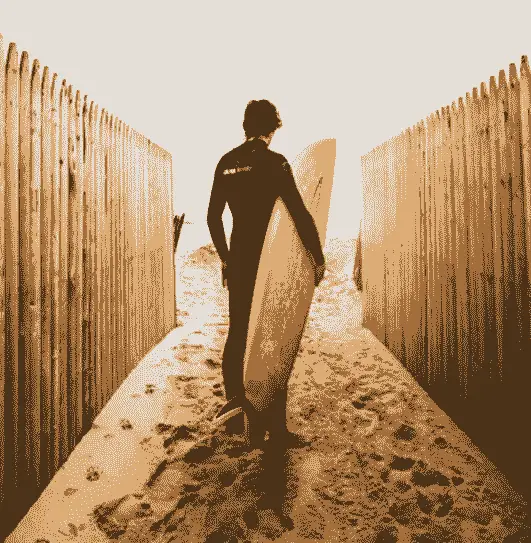How Do Surfers Know When to Catch a Wave? Surfing is all about catching waves.
When a newbie surfer grabs a surfboard for the first time, they are likely to ask this question that “how to catch a wave?”.
Surfing’s first wave is indeed an exciting experience.
The key is to paddle into a wave slowly and synchronically, which is the secret. To avoid falling when riding waves, there are several strategies that one might use.
Initially, learning the pop-up method in the sand isn’t as enjoyable as reclining on the beach,
But with time & patience, you’ll be able to do the action in the sea and catch whatever wave you like.
For many surfers, catching the waves is what brings them delight. Here in this article, we will guide our viewers on how surfers know when to catch a wave.
Having trouble learning to surf? Here are some high-quality surfing tips from a real surfer.
How To Catch a Wave?
Newbie surfers often find it difficult to catch a wave. However, there is no shortcut to mastering the art of catching a green wave.
The truth is that catching a green wave is a complex process, and the most key point to remember is however that practice makes perfect.
Thinking that you can be surfing waves in a matter of minutes is unrealistic. Time in the water, however, is the most helpful and can’t be replaced.
Simply said, if you want to catch a wave, you need to put in the time.
To sum it up, catching a wave is all about getting your board in the right place, matching the wave’s pace, and maintaining control of your board.
Surfing is one of the most difficult sports to learn. Here’s a full list why surfing is so tough.
- Positioning and paddling
You need to be able to notice the wave early enough so that you’re in a position where the wave begins to change form into a bump or slope while setting your board. Take a position around 4 to 5 meters back from where you believe the wave will change into that tiny slope.
- Adjust To the Wave’s Speed
You should lie down on the surfboard when you detect a swell bump coming that appears to have the potential to become a decent wave. Long, smooth, and deep strokes should begin as soon as the bump is a few meters ahead of you. If you can keep up with the wave’s pace, you’ll be able to slide down it. At this moment, you’ve got your first wave.
- Take Control of Your Surfboard with Your Feet.
Once you’ve caught the wave, you must keep your composure. The cobra position is a great way to maintain the board in your hands. Surfing at the peak of a wave is best done when you have complete control of your board. Knees, not the waist, must bend for a lower center of gravity and better balance.
Surfing on a shortboard is the most advanced, here is how you can learn to ride a shortboard in a short period of time.
Additional Advice and Suggestions – When it comes to surfing, picking the sound wave is essential.
Choosing the worst wave in a set is a certain way to waste valuable queue, wind yourself riding whitewater to the shore, or go down hard.
Surfing begins with learning how to catch a wave and then progresses to standing up on a board.
As a result of choosing the wrong wave, you won’t be able to jump up until you’ve caught at least a dozen rollers while prone.
As soon as you’ve learned how to catch a wave, you’ll be able to push for a wave at quite an angle such that you may ride it virtually parallel to the beach for a long time.
Beginner surfers don’t know where the wave is striking, but practice and surfing literature will help them get the hang of it soon enough.
It’s important to keep in mind that the point of surfing is to go as close as possible to the whitewater without getting wet.
Here are my best surfing blog posts
- Beginner to Intermediate Surfer Advice (Best one)
